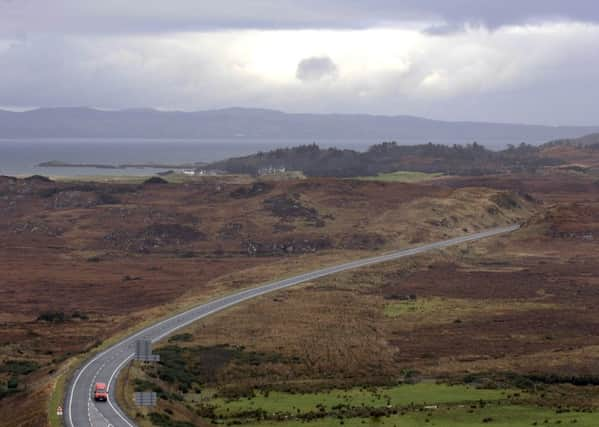Rural areas in Scotland hardest hit by ATM removals


The study by consumer group Which? using Link data found that 146 machines were shut down north of the Border between November 2017 to April 2018, including 40 in rural areas and 106 in Scotland’s towns and cities.
UK-wide, almost 1,500 machines closed during this period – around 300 every week – marking a near six-fold increase from a steady rate of fewer than 50 closures a month since 2015.
Advertisement
Hide AdAdvertisement
Hide AdThe rural closures comprised 2.9 per cent of the total, while 2.1 per cent of ATMs were lost in urban areas.
Overall in Scotland, 2.2 per cent of the 6,367 ATMs were lost.
The report claimed that the closures accelerated as operators began to learn of the plans from Link – which runs the UK’s largest cash machine network – to cut the amount that banks pay for withdrawals.
Harry Rose, Which? money editor, said: “With hundreds of cashpoints closing every month we have serious concerns that, far from protecting consumers’ access to cash, LINK’s plans risk destroying it.
“These cuts could see millions of people who rely on cash in their daily lives struggling through these closures – with severe consequences for many Scottish communities and businesses.”
Which? is calling on the regulator to “urgently” intervene and halt the cuts until a thorough analysis of the impact on communities is conducted.
Mr Rose added: “The impact of these cuts is already clear – with machines closing at a frightening pace. The regulator must act now to stop further closures and ensure that consumers aren’t suddenly stripped of their access to cash.”
LINK’s Financial Inclusion Programme promises premiums of up to 30p extra per transaction to support “at risk” machines, along with a guarantee that all free ATMs currently more than one kilometre from the next will be exempt from these funding cuts.
Advertisement
Hide AdAdvertisement
Hide AdNina Ballantyne, policy manager at Citizens Advice Scotland, said: “Our own evidence from CABs in rural areas shows that people there face a number of particular challenges, such as poor connectivity, high delivery charges and inconsistent public transport. A reduction in the number of ATMs can only make life even more difficult.”
She added: “Consumers and businesses in remote and rural areas deserve to have reasonable access to key services and we would hope that ATM suppliers would consider this as they plan their business models going forward.”
A spokesman for LINK said that over the last 10 years cash payments have fallen by a third, but that free ATM numbers had grown by 50 per cent to 18,000. He added that across the UK, 80 per cent of machines are within 300m of another.
He said: “This disconnect is not sustainable and needs addressing now to protect Link and future access to cash for consumers.
“Link’s announcement looks to address protecting the coverage of machines in a declining market. This will be done by reducing the interchange paid in busy city centres where there is over provision of machines and increasing the interchange rate paid in more remote or rural areas. This will mean that whilst the overall number of machines is likely to fall in overprovided areas, the overall coverage will be protected for consumers.”
While digital payments are increasing, Which? said it is concerned that not enough is being done to preserve consumers’ access to cash payments, which are still relied upon by 2.7 million people across the UK. UK Finance recently found that cash still accounted for just over a third of all payments in 2017 and is the second most commonly used payment type after debit cards.